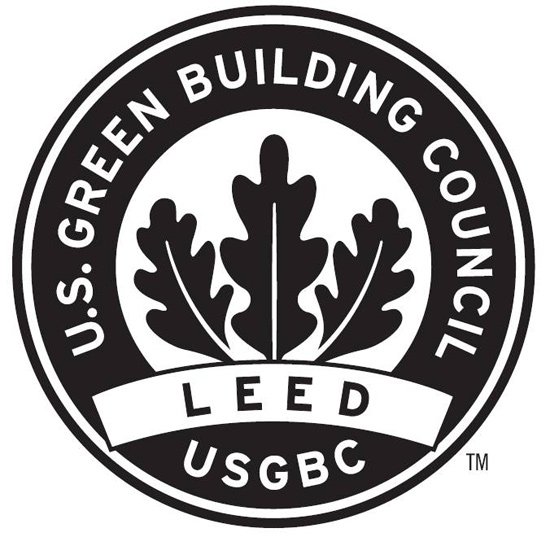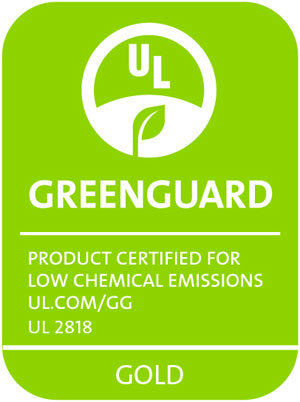Designing Schools for a Modern Learning Environment
Green and Sustainable Elements in 21st-Century Schools and Classrooms
In 21st-century schools and classrooms, architects and the AIA continue to lead the green charge.
“When we transform the physical environment of learning institutions, we transform the way students, teachers and communities engage with their world,” states the Center for Green Schools website. “A green school is an interactive teaching tool, imparting lessons of stewardship and kinship, preparing students so that they can lead productive lives.”xiv
According to U.S. Green Building Council: “School buildings can enhance a student’s ability to learn by keeping them healthy, attentive and present.”

These are some strategies suggested by USGBC for designing schools that can earn LEED or other green building certifications:
• Removing toxic materials and products from places where children learn and play.
• Controlling exposure to dust and pollen, which improves the health of students, faculty and staff, potentially decreasing sick days.
• Giving access to daylight and outdoor views to building occupants, which has been shown to heighten participation, lessen distraction and encourage learning. Studies have shown that when deprived of natural light, children’s melatonin cycles are disrupted, thus likely having an impact on their alertness during school.
• Emphasizing the importance of acoustics, which are fundamental to absorbing and retaining information. There is a clear connection between proper acoustic design in schools and acoustic performance from students.
• Providing access to thermal controls like thermostats or operable windows, which teachers report give higher levels of comfort in their classrooms.
For furnishing a classroom using best environmental practices, look for evidence of a furnishing manufacturer’s green commitment. This could include:
Cradle-to-Cradle Product Certification—certifies a product’s use of healthy materials and eco-intelligent design. Products gaining this certification must meet standards for Material, Health and Reutilization; Renewable Energy; Water Stewardship, and Social Responsibility.

GreenGuard Indoor Air Quality Certified — According to the Environmental Protection Agency (EPA), indoor air pollution is two to five times worse than outdoor air pollution. This is important to know as we spend up to 90 percent of our time indoors. The EPA also reports that 60 percent of homes and 30 percent of commercial buildings are classified as “sick.”xv
GreenGuard certified products must meet stringent requirements for chemical emissions and toxicity. They are screened for thousands of chemicals, irritants, carcinogens and reproductive toxins.
The GreenGuard Children & Schools certification program is for places where children and others play, work and reside. It offers even stricter certification criteria. It is referenced by both the Collaborative for High Performance Schools (CHPS) and LEED.
Conclusion
Architects and specifiers have long led the way toward healthier and more functional buildings and interiors. Understanding how schools and teaching need to change, and are changing, puts the architect in a better position to design for the future, rather than repeating the past.
According to the National Center for the Twenty-First Century Schoolhousexvi at San Diego State University:
“If they have done their job well, planners/designers have even considered the relationships between spaces within the building. The aim should be a synthesis of program maximizing a unity of form and purpose. If carefully conceived, the separate spaces will reinforce each other physically and aesthetically. They will contain the best of the past, make safe the present and be flexible enough to accommodate the future.”
In this course, we looked at why and how schools are changing in the 21st century, and how classrooms are evolving into better learning environments. We examined in detail how flexible furnishings specified for classrooms add to superior learning. And finally, we looked at the green and sustainable elements pertinent to classrooms in the 21st century.
Endnotes
i http://www.c-span.org/video/?321025-2/washington-journal-elementary-secondary-education-act-1965
ii http://www.rand.org/multimedia/audio/2012/09/05/lessons-science-learning.html
iii http://www.forbes.com/sites/susanadams/2013/05/17/why-the-open-office-fails-and-a-solution/
iv http://www.ccsenet.org/journal/index.php/ach/article/view/18473
v http://classroom.4teachers.org
vi http://coe.sdsu.edu/edl/schoolhouse/documents/MASALeader_Fall2010_Seaman.pdf
vii http://www.nsta.org/publications/archive-stem.aspx
viii http://www.nbclearn.com/portal/site/learn/science-of-the-summer-olympics
ix http://www.nbclearn.com/portal/site/learn/science-of-nfl-football
xi http://web.mit.edu/edtech/casestudies/teal.html
xii http://www.domainpdf.com/detail-pdf/teaching-for-learning-a-philosophical-approach-to-classroom
xiii http://psychcentral.com/news/archives/2006-03/mc-mco031006.html
xiv http://www.centerforgreenschools.org/leed-for-schools.aspx
 |
MooreCo Inc., has been manufacturing high quality visual communication products, technology products and school and office furniture for decades. Today, MooreCo is committed to modern design, understanding of modern classrooms and workspaces and flexibility for future trends. The MooreCo goal is to achieve operational excellence in all aspects of procurement, manufacturing, customer order fulfillment and environmental stewardship while designing products for safe, healthy and sustainable environments. www.moorecoeducation.com |








